FRETS.COM
Tips & Tricks
Really quick and easy
Burnishing Dowels to Size
© Frank Ford, 2003; Photos by FF
This is one of those peculiar Martin arch top guitar bridges from the 1930s.
They have plastic guide rods and plastic adjusting screws:
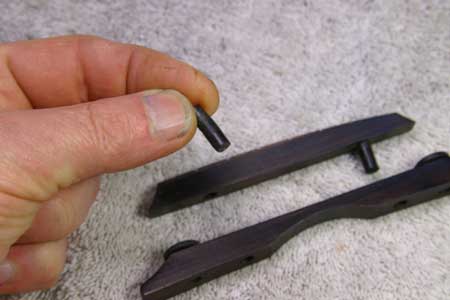
This one's rods had become so bent with time and tension that the bridge was
in danger of collapsing.
Not having either the time or the inclination to chuck up a
piece of phenolic rod and turn a replacement on my lathe, I figured I'd measure
it and substitute a nice strong wooden dowel:

Of course, the size turned out to be nowhere close to a standard dowel diameter.
I ran to my number drill index and grabbed the one that matched
my measurement:
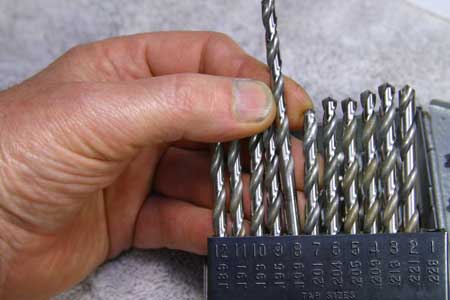
Chucked it up and quickly drilled a hole through a piece of
scrap ebony:
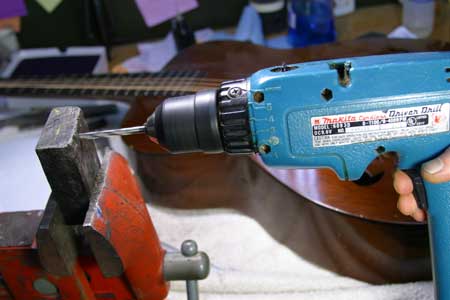
I suspect any hardwood can do this job, but I had the ebony
handy.
Then I chucked a piece of 1/4"birch dowel in my Makita
and ran it against the small belt sander to rough it down to a smaller diameter:

With the drill running in reverse and the belt speeding by,
it was very quick and easy to make a lumpy approximation of what I needed. I
went too far with the end of the dowel, and simply chopped it shorter, leaving
plenty enough for the job at hand.
Running the dowel at full speed, I was able to jam it through
my newly drilled hole:
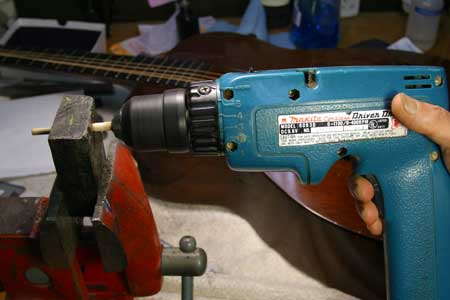
Viola! (This spelling always seems more musical.
. .) I had a dowel of exactly the right diameter for a tight press fit
in the top of the bridge and a loose fit in the base:
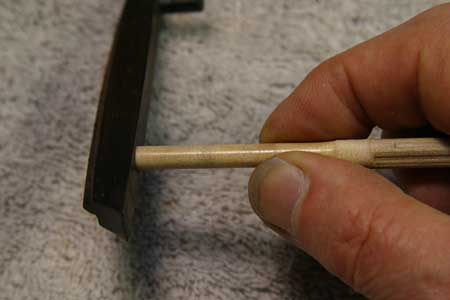
A few quick strokes with the infamous "Steinway Touch-up
Kit" and my new dowel was black and shiny:
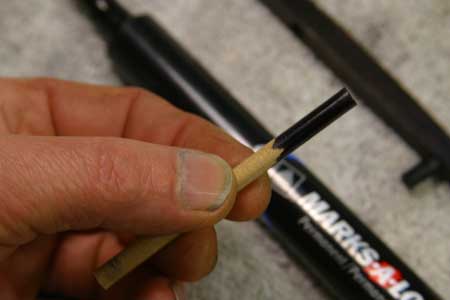
Here it is, doing its job:

You might be tempted to use this technique for precisely sizing dowels to use
for other purposes. I was, and I've found it necessary to break the glaze on
the surface before using the dowel for gluing.
Some judicious sanding does the trick quite well, and I believe
that the water in the glue tends to swell the burnished dowel a bit, tightening
its fit in the hole. I've tried burnishing the dowel into the actual hole in
which it will be glued, but that's a dead end street because of the difficulty
of breaking the glaze down in the hole!
Back to Index Page








